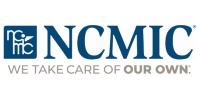The Power of the Yankee Fans New Book features all the characteristics and elements that define the Yankee faithful There is no doubt in professional sports that teams will never succeed without the support of their fans. In the case of the New York Yankees, their history in baseball is filled with many great moments, many unforgettable players and the fact that millions have cheered and supported them all through the years. Such a following is now a multi-generational phenomenon and readers can find out by joining author Joan Fallon as she presents an in-depth look at what being a Yankee fan is all about with the release of her exciting new book 27: The Voice of the Yankee Fans. 27 looks at what it will take for the Yankees to win their 27th world championship in the future as well as the fans’ role in that championship. Aside from showcasing the team’s fabled history and legendary players (including Babe Ruth and Mickey Mantle), the book also explains elements of the new and old baseball thinking, provide readers a unique look at fan participation in baseball, and finally it defines the Yankee fan as a unique individual whose love for the team can never be doubted or ignored. Thanks to its amazing content and compelling photography, and illustrations by the award-winning sports artist James Florentino, 27 is highly recommended to Yankee fans and baseball fans of all ages, and it will undoubtedly make them understand their role with the team. Even non-fans or spectators will find the book attractive not only to satisfy their interest in baseball but it will also give them the clearest definition of what is it really like to be a Yankee fanatic. For your reading pleasures, feel free to look for 27: The Voice of the Yankee Fans online at Xlibris.com, www.amazon.com and at major bookstores and libraries today! About the Author Dr. Joan Fallon, a New York chiropractor and former assistant professor at Yeshiva University and presently CEO of CureMark, a biotechnology company, is a life-long Yankee fan and student of the game. Wiith two major passions in her life baseball and children; “Dr. Joan” as she is called by her patients, has passed on her love of baseball and the Yankess to two generations of children in her office. A nationally-ranked squash player in college, “one-on-one” champion in High School and the first female to enter the Westchester County Jounior golf tournament, sports has always been a big part of her life. She has been honored to have a letter written to Mickey Mantle chosen for his farewell book: Letters To Mickey, as well as having authored numerous professional texts and papers. She takes great pride in her chiropractic pediatic practice as she is able to help numerous children, many of whom have developmental disabilities. As a patent holder and CEO of CureMark she hopes to bring significant help to children with ADD, ADHD, and autism in the very near future.
- Home
- About
- Find a Doctor
- Membership
- Education
- News
- Newsletter
- Conventions & Symposiums
- Webinars
- Positive Press (F4CP) ↪
- Insurance and Medicare ⚿
- New Practitioners ⚿
- Center for Excellence ⚿
- Informative Links
- Mandated Reporter Training↪
- Leadership
- Officers and Regional Directors
- Districts
- District Officers ⚿
- District Map
- District 1 (Manhattan)
- District 2 (Brooklyn)
- District 3 (Queens)
- District 4 (Bronx)
- District 5 (Staten Island)
- District 6 (Nassau)
- District 7 (Suffolk)
- District 8 (Westchester)
- District 9 (Mid-Hudson)
- District 10 (Capital Region)
- District 11 (Mohawk Valley)
- District 12 (Central NY)
- District 13 (Binghamton Area)
- District 14 (Rockland County)
- District 15 (Finger Lakes)
- District 16 (Southern Tier)
- District 17 (Western NY)
- Committees
- Bylaws ⚿
- Code of Ethics ⚿
- Elections ⚿
- Advocacy
- Sponsors
- Classifieds




